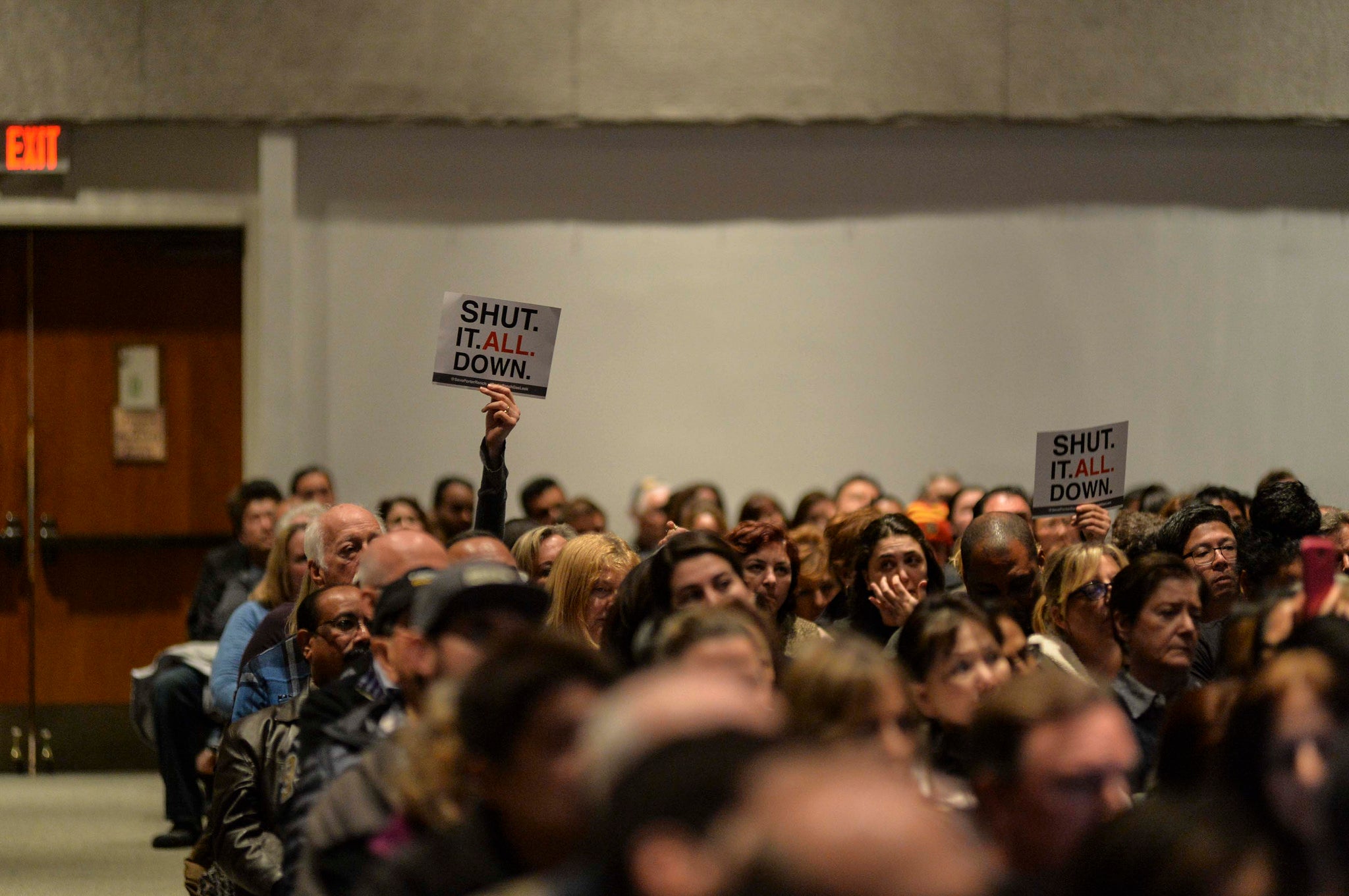Massive Gas Leak Reveals High Cost of Fossil Fuels
Though the natural gas leak in Southern California could be plugged by the end of February, residents who are concerned about additional leaks are pushing for the facility to be shut down for good.

This page was published 9 years ago. Find the latest on Earthjustice’s work.
Recently, Southern California air quality regulators finally issued an enforcement order directing Southern California Gas Company (“SoCal Gas”) to permanently shutter its leaking underground natural gas well near Porter Ranch, where a massive methane leak is spewing thousands of pounds of harmful chemicals into the atmosphere every hour.
SoCal Gas announced that it expects to finally fix the leak by late February. But Porter Ranch residents, who have faced health concerns, school closures and relocation since the leak began in late October, continue to be impacted.
Two weeks ago, an analysis by outside experts and the Associated Press revealed that benzene levels emitting from the storage well were higher than the company had publicly stated. Some residents are even concerned that their pets have been affected by the leak. And the company’s unsuccessful efforts to plug the leak may have worsened the blowout risk.
“It smells like strong rotten eggs mixed with sulfur,” Gabriel Khanlian said in an interview with AJ+. “My children have been getting runny noses, bloody noses, stomach aches, headaches, mood swings and burning eyes.”
Khanlian is a member of Save Porter Ranch, a local organization working to respond to the massive methane leak.
The South Coast Air Quality Management District’s enforcement order requires SoCal Gas to fund an independent health study, develop a better system for detecting leaks from the facility’s wells, report odor complaints made since Oct. 23 and drain as much gas as possible. Once the well’s leak has been stopped, SoCal Gas must shutter the well completely. But, there are 114 other storage wells at the site that will continue to be allowed to operate under the current order.
Why are we giving the benefit of the doubt that the rest of this aged facility is working properly? This faith in a facility that has perpetrated one of the largest methane leak disasters in modern history makes no sense. To make matters worse, the air district’s recent lawsuit alleges that “SoCalGas’ negligence caused the leak from [the well].” Clearly we should not give this facility the benefit of the doubt.
As Earthjustice noted recently, many think the agency must go much further in protecting residents and the local environment from this manmade disaster. Last week, the state Senate approved a moratorium that will stop the withdrawal of gas at 18 wells similar to the one that is leaking, according to the LA Times. Others are pushing to see the Aliso Canyon storage facility shut down entirely.
“Residents of Porter Ranch are not safe as long as the facility continues to operate,” according to a spokesperson at Food & Water Watch, which is fighting alongside community groups and local residents to demand information and accountability about the leak. “In 2016, we’ll continue our work with Porter Ranch and Los Angeles to urge Governor Brown to shut down the Aliso Canyon Storage Facility.”
The SoCal Gas Aliso Canyon storage facility is the largest of its kind in the West, spanning approximately 3,600 acres north of Porter Ranch. But the well that’s emitting the methane plume is only one of 115 across the underground facility, and it was originally drilled in 1953—that’s 63 years ago. A recent report in the LA Weekly pointed out that SoCal Gas removed an all-important safety valve from the leaking well in 1979—and never bothered to replace it. That valve could have increased the chances of preventing the leak.
Since the natural gas leak began, people have been sickened, residents and school children have been displaced and California’s efforts to address climate change have been eroded.
Most of what’s being released into the atmosphere from this leak, which is one of the largest ever recorded, is methane—a far more potent heat-trapping gas than carbon dioxide. As of today, this one spill is responsible for the greenhouse gas emission equivalent of burning more than 800 million gallons of gasoline.
The bigger picture is even more sobering. As huge of a problem as the Aliso Canyon leak is, it represents only around five percent of methane pollution from the U.S. oil and gas industry on an annual basis, according to an Earthjustice analysis. In addition, the Aliso Canyon storage well leak may be plugged by February, but it’s only one of the many decades-old wells at that facility. And even when natural gas isn’t leaking due to an accident, burning it contributes to climate change and impacts the health of communities across California, especially low-income communities of color.
We need to keep the pressure on our leaders and regulators to ensure these aging fossil fuel facilities that are ubiquitous throughout the nation do not harm the health and welfare of residents. This will involve ensuring our laws are strongly upheld and potentially crafting new legislation and regulations. The Aliso Canyon debacle just highlights that our lax approach is failing us.
The California Regional Office fights for the rights of all to a healthy environment regardless of where in the state they live; we fight to protect the magnificent natural spaces and wildlife found in California; and we fight to transition California to a zero-emissions future where cars, trucks, buildings, and power plants run on clean energy, not fossil fuels.